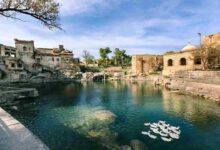Famous Temples of Lord Vishnu: Huge crowds of devotees gather in these famous temples of Lord Vishnu, where Shri Hari still performs many big miracles
Famous Temples of Lord Vishnu: The cosmos is guarded by Lord Vishnu. As Kashyap and Aditi’s twelfth, Adityawas born a dwarf. He is holding a conch, a lotus blossom, a mace, and a chakra in each of his four hands. He lived in the Vaikunth river on a bed composed of a thousand serpents. Hindu mythology states that Lord Vishnu takes on several incarnations since he is the universe’s guardian. Many Hindu adherents adhere to the tradition of Vaishnavism. In remembrance of Lord Vishnu and his incarnations, many temples have been constructed all over the globe. Below are some of his well-known temples:
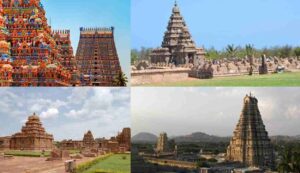
Badrinath Temple, Badrinath
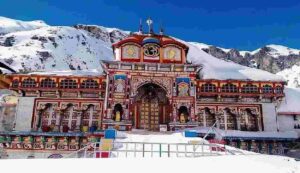
The Badrinath Temple is situated in the Garhwal Hills in the Chamoli district of Uttarakhand, at an elevation of around 3133 meters, on the banks of the Alaknanda River. It is important to note that it is one of Lord Vishnu’s holiest temples and a destination for pilgrims during the Char Dham Yatra. The deity of Lord Vishnu in the temple is said to have been found in the eighth century by Adi Shankaracharya in the waters of the Alaknanda River. Badrinath has long been revered as the sacred place where Lord Vishnu, in the shape of the Badri tree, was protected by Goddess Lakshmi. These days, people go there to meditate for Lord Vishnu. The Badrinath temple is only accessible for darshan during the summer months of May through October each year due to unfavorable weather and its location.
Ranganathaswamy Temple, Srirangam
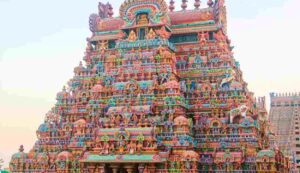
The biggest Hindu temple in the world devoted to Lord Ranganatha is the Ranganathaswamy Temple, also called Tiruvarangam of Srirangam. The first Vaishnavite temple in South India, spanning 156 acres, was constructed on an island created by the Cauvery and Coleroon rivers. The temple is home to the highest royal tower in South India, the biggest complex in the world, and a self-manifested statue of Lord Vishnu. This shrine is linked to religious thinkers like Ramanuja and has great historical significance.
Padmanabhaswamy Temple, Trivandrum
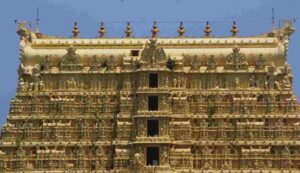
The location of Padmanabhaswamy Temple is Trivandrum. Constructed in a combination of Tamil and Keralan styles, it is among Kerala’s oldest temples. The capital of Kerala, Thiruvananthapuram, was really named after the city of Lord Ananta during the time this temple was built. The deity of Lord Vishnu at this temple is lying on the Adisesha in the yoga nidra position known as Ananta Shayanam. It is associated with the Anantapuramu Temple of Kasargod and the Adikesha Perumal Temple of Kanyakumari, making it one of the sacred sites of Vaishnavism in South India. It is the world’s most affluent Hindu temple. The patron god of the Travancore royal dynasty is the name given to this divinity.
Venkateswara Temple, Tirumala
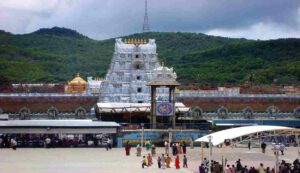
Located in Andhra Pradesh’s Chittoor district, Venkateswara shrine is a significant Vaishnavite shrine. The statue of Lord Sri Venkateswara is seen here standing with his face to the east. One of India’s wealthiest temples, it was constructed in the Dravidian style. This location is known as “Kaliyuga Vaikuntham” in Hindu mythology, where Lord Venkateswara would serve mankind till the end of Kaliyuga. Approximately 50 million individuals are said to visit this temple annually.
Jagannatha Temple, Puri
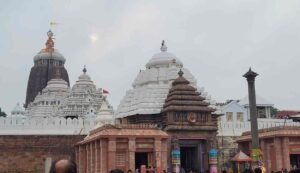
The seaside Odisha city of Puri is home to the Jagannath Temple. One of the most revered Vaishnav temples devoted to Lord Jagannath is this one. This significant location for Lord Sri Krishna’s pilgrimage is well-known for its Rath Yatra. Here, a massive, ornate chariot that is around 45 feet high and 35 square feet in size is used to transport the three idols of Lord Krishna, Balram, and Subhadra in a procession over three kilometers from the temple to the Gundicha Temple. This chariot is pulled by devotees. The Ramanathaswamy Temple, Dwarkadhish Temple, and Badrinath Temple are the next stops on the Char Dham Yatra, according to Adi Shankaracharya. In addition to its theological importance, the temple is well-known for housing several saints, including Adi Shankaracharya, Ramanuja, Chaitanya Mahaprabhu, and others.
Dwarkadhish Temple, Dwarka
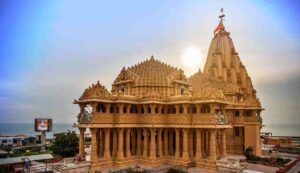
The Jagat Mandir, also called the Dwarkadhish Temple, is situated at Dwarka on Gujarat’s western coast. The son of Lord Krishna, Vajranabha, constructed it almost 2,000 years ago. Lord Krishna is the object of devotion in the temple. During the Dwapara Yuga, the kingdom of Dwarka was governed by Lord Krishna, the eighth and most adored avatar of Lord Vishnu. The magnificent seventy-two pillars support this five-story structure. One of India’s four main pilgrimage sites, it was altered in the 16th century using Chalukya architectural design. For serenity and quiet, be sure to visit this Vishnu statue at least once in your lifetime.
Ramanathaswamy Temple, Bhadrachalam
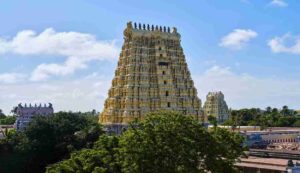
The Godavari River’s banks are home to the Ramanathaswamy Temple. This well-known temple is devoted to Lord Rama, another of Lord Vishnu’s most esteemed incarnations. Along with Sita and Lakshmana, this four-armed statue represents Lord Rama in his Vaikuntha form. It is said that Lord Rama granted Bhadra darshan here after forgetting he was in a human avatar.
